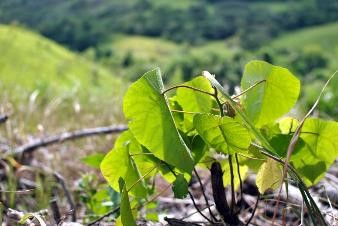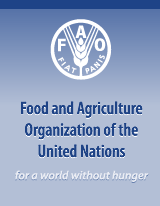Assisted natural regeneration of forests
 Landscape with naturally regenerated forests in Bohol, the Philippines. ©FAO/Kenichi ShonoDeforestation and land degradation threaten the livelihoods, well-being, food, water, energy security and resilience of millions of people around the world. There are currently over two billion hectares of deforested and degraded landscapes in the world that could benefit from restoration.
Landscape with naturally regenerated forests in Bohol, the Philippines. ©FAO/Kenichi ShonoDeforestation and land degradation threaten the livelihoods, well-being, food, water, energy security and resilience of millions of people around the world. There are currently over two billion hectares of deforested and degraded landscapes in the world that could benefit from restoration.
Recognizing the need to mitigate the severe negative local impacts and far-reaching consequences of deforestation and forest degradation, countries around the world have committed to restoring millions of hectares of degraded land in the next decade. A myriad of national and local governments, non-profit organizations, actors from the private sector and local communities are ramping up efforts to plan, execute and monitor large-scale restoration.
The Bonn Challenge, New York Declaration on Forests, the prominence of forest restoration in Nationally Determined Contributions, National Biodiversity Strategies and Action Plans (NBSAPs) and REDD+ strategies of many countries demonstrate such global commitment to restoration. In addition, the UN Decade on Ecosystem Restoration (2021–2030) aims to accelerate and scale up existing restoration efforts to restore degraded ecosystems as a proven measure to fight the climate crisis and enhance food security, water supply and biodiversity.
Given the scale of the challenge, it is essential that scarce resources are allocated efficiently. Natural regeneration is gaining recognition as a practical approach that allows for the cost-efficient restoration of forests at large scales, by recognizing and overcoming obstacles to natural regeneration (FAO, 2019). Natural regeneration is a biological process that can be assisted and managed to increase forest cover and associated ecosystem services.
What is ANR
 Natural regeneration of a pioneer tree species in a deforested site. ©FAO/Kenichi ShonoANR is a simple, low-cost restoration method that can effectively enhance the productivity and ecosystem functions of deforested or degraded lands. The method aims to accelerate, rather than replace, natural successional processes by removing or reducing barriers to natural regeneration such as soil degradation, competition with weedy species, and recurring disturbances (e.g. fire, grazing and wood harvesting).
Natural regeneration of a pioneer tree species in a deforested site. ©FAO/Kenichi ShonoANR is a simple, low-cost restoration method that can effectively enhance the productivity and ecosystem functions of deforested or degraded lands. The method aims to accelerate, rather than replace, natural successional processes by removing or reducing barriers to natural regeneration such as soil degradation, competition with weedy species, and recurring disturbances (e.g. fire, grazing and wood harvesting).
ANR encompasses a range of restoration interventions that can help achieve different goals of restoration and related policy objectives.
The science and practice of ANR is a relatively recent but growing field of restoration science, with examples of successful applications around the world multiplying in recent years.
